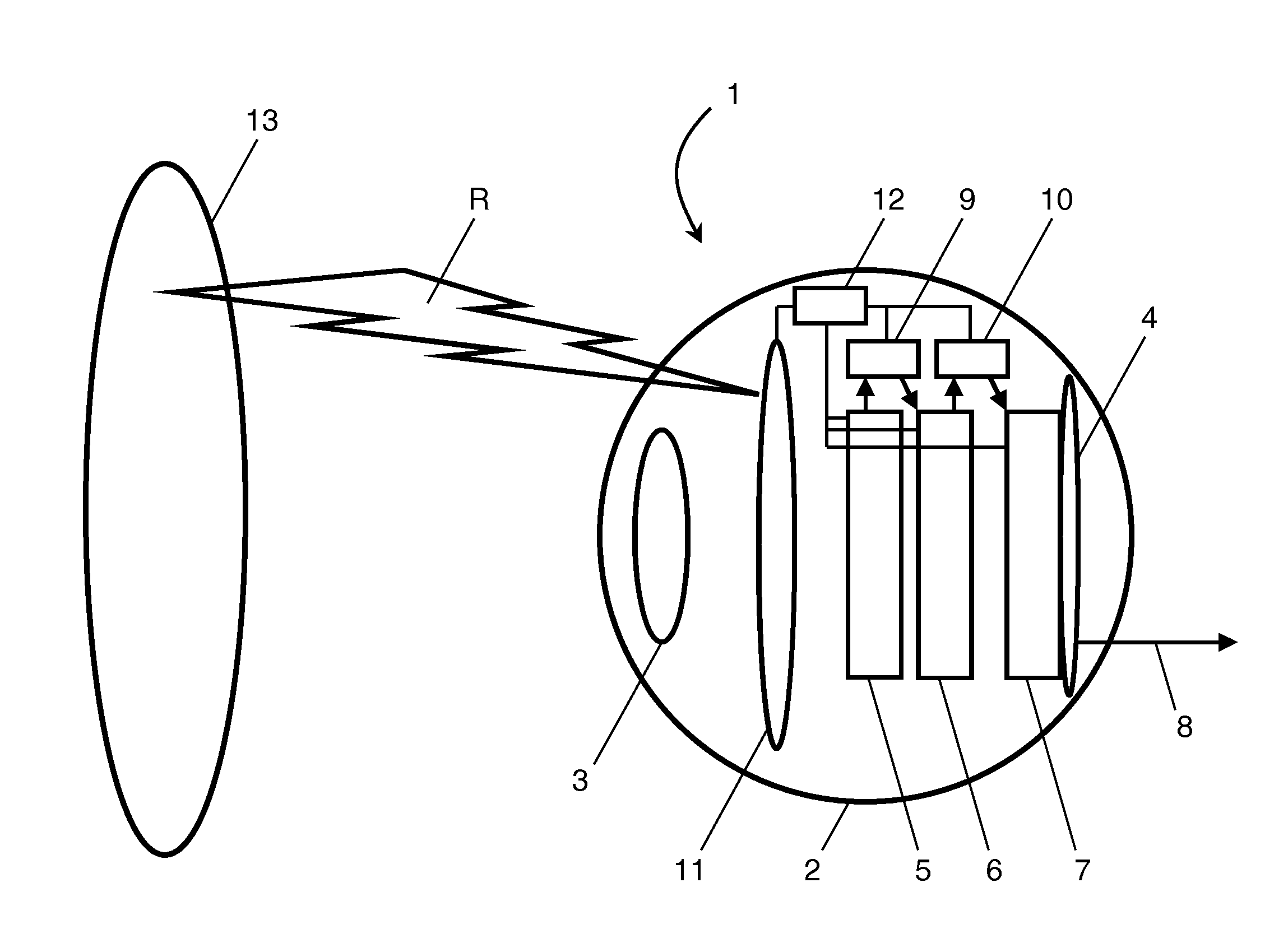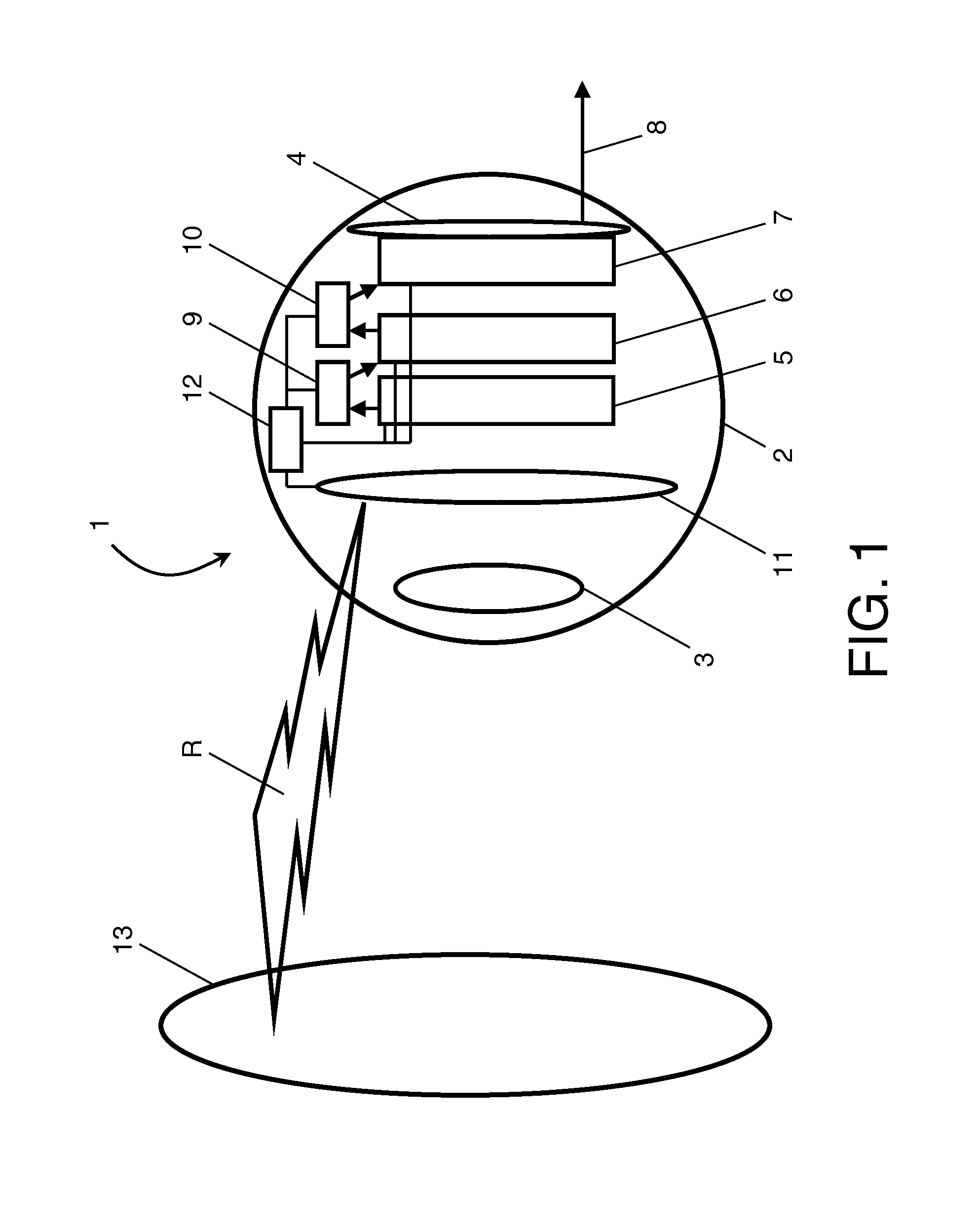[0007]This object is solved by a visual prosthesis implant according to claim 1. The visual prosthesis implant comprises: an
SIMD-based
processor array adapted for receiving image signals from an
image sensor and outputting processed signals, and a bio-compatible
electrode implant receiving the processed signals and adapted for coupling to neurons. Thus, the visual prosthesis implant comprises an SIMD-based (single-instruction multiple data) processor array. Processor arrays based on the
SIMD processing paradigm provide very high computational efficiency in embedded
image processing applications. Thus,
low power dissipation, small size, real-time
image processing, and
programming flexibility can all be simultaneously achieved by making use of on-chip
SIMD processing. The high
degree of parallelism of n
processing cores (with n being an integer) in
SIMD processing (a core being typically called a
processing element (PE) in SIMD designs) allows for a lower supply
voltage for the same performance because only a
clock frequency f which is 1 / n times the
clock frequency of a
single core realization is needed, and operation at such a lower
clock frequency can be achieved at a lower supply
voltage. Although the lower clock frequency f for charging and discharging a chip interconnect to some extent cancels out against the factor n increase in chip area A required for provision of n cores, the power dissipation of a multi-core realization can, for the same performance, still be significantly lower as compared to a single-
core system (or a
system comprising a few cores). This is due to the fact that the supply
voltage contributes quadratically to the power dissipation. As a consequence, the required
low power dissipation can be achieved using SIMD-based processor arrays. The parallelism of SIMD processing is also a perfect match to typical low level image processing algorithms in which typically all pixels are subjected to the same set of transformations while any remaining differences in pixel processing can be accounted for through transformation parameters and masking bit vectors. Further, the
SIMD architecture offers a large degree of programming flexibility for adapting the performance of the visual prosthesis implant as compared to e.g. an ASIC design. A combination of an
image sensor, the SIMD-based processor array, and a bio-compatible
electrode array for coupling to neurons offers great advantages over the existing art. In particular, fully integrated intraocular implants can be realized with this combination of features. However, in principle the image sensor can be either provided separate from the visual prosthesis implant or may be integrated in the visual prosthesis implant.
[0008]Preferably, the SIMD-based processor array is adapted to output signals conditioned to match bio-compatible electrode characteristics. In this case, only a basic digital-analog converter (DAC) needs to be applied to convert
digital signal levels and codes to appropriate voltage, current, and
charge injection rates which further helps in reduction of the overall device area and
power consumption.
[0013]Preferably, the visual prosthesis implant is structured such that the SIMD-based processor array receives
digital image signals directly from an image sensor having a digital output or from an analog image sensor via an analog-
digital converter. Such an arrangement allows achieving a particularly small overall volume which is advantageous for e.g. intraocular implants.
[0014]Preferably, the visual prosthesis implant is adapted to be wirelessly provided with electrical power. In this case, the visual prosthesis implant does not even require wiring to the exterior for power supply, thus reducing risks coming along with external wiring such as possible infections, wiring wear, etc.
[0015]According to an aspect, the visual prosthesis implant comprises a low-bandwidth
wireless communication unit. A low-bandwidth
wireless communication unit also comprises low power dissipation and can e.g. be realized through the zigbee protocol. Such a
wireless communication unit may be adapted to allow changing of operation settings of the visual prosthesis implant, uploading new
firmware and programs, imposing test images on the
electrode array, and reporting device and electrode status or debugging information such that all these features can be realized without requiring wiring to the external.
 Login to View More
Login to View More  Login to View More
Login to View More 

